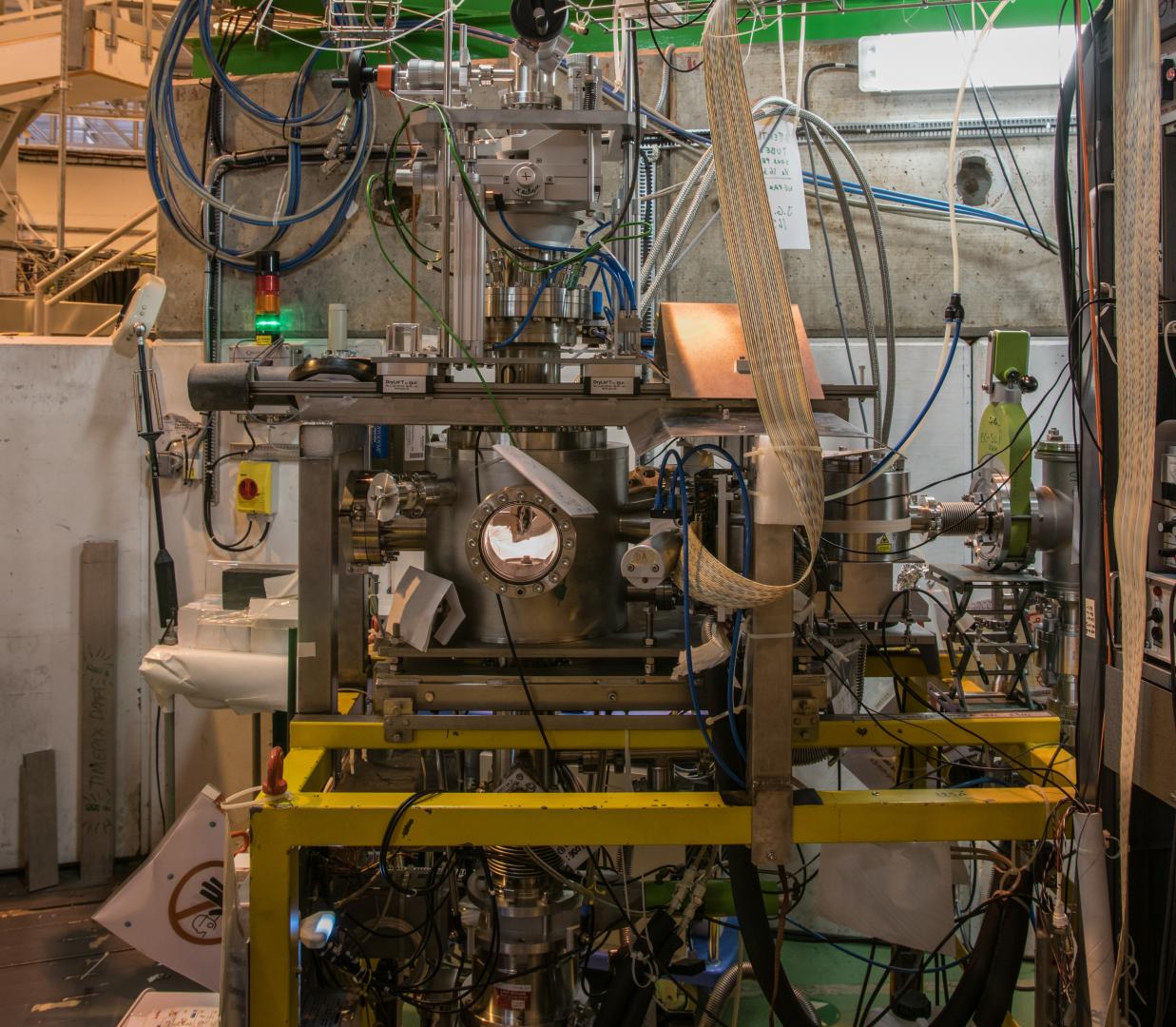
Joao Guilherme Correia (Guilherme.Correia@cern.ch); Ulrich Wahl (uwahl@ctn.tecnico.ulisboa.pt); Lino Pereira (Lino.Pereira@kuleuven.be); https://espace.cern.ch/ISOLDE-SSP/EC
EC-SLI (Emission Channeling with Short-Lived Isotopes) is an experiment at ISOLDE dedicated to studying the lattice location of dopants and impurities in single crystals and epitaxial thin films. The main fields of work currently include semiconductor doping for applications in electronics and colour centers in diamond and related materials for quantum technologies, among others. While EC-SLI is the on-line setup for short-lived isotopes located at the GHM beam line, it is complemented by three off-line ones, also at ISOLDE, which are suitable for longer-lived isotopes with half-lives above a few hours.
Radioactive probe atoms are introduced into a single crystal by means of ion implantation. ISOLDE provides the widest range of radioactive isotopes for most elements in the periodic table. For a given element to be studied, a radioactive isotope with suited decay characteristics (e.g. half life, energy and type of decay particles) is selected and implanted into the host material. The charged particles emitted upon radioactive decay experience channeling and blocking effects inside the single crystal. Position-sensitive detectors are used to detect the emitted particles as function of angle from major crystallographic directions. The resulting anisotropic emission patterns are characteristic of the lattice sites occupied by the implanted probe atoms, which in turn determine its functional properties (e.g. n- or p-type doping in a semiconductor). By fitting the experimental emission patterns with theoretical yield distributions calculated for probes in different lattice sites, the dopant lattice location is quantitatively determined with unrivaled unambiguity and precision.
